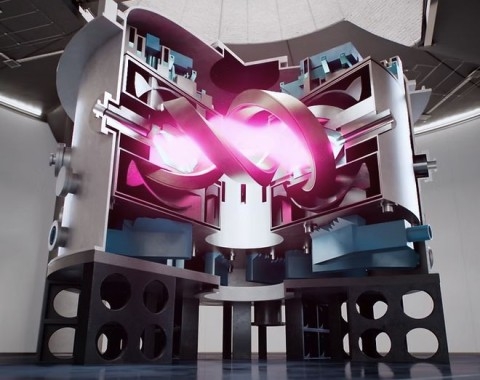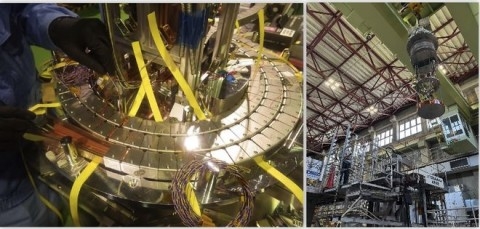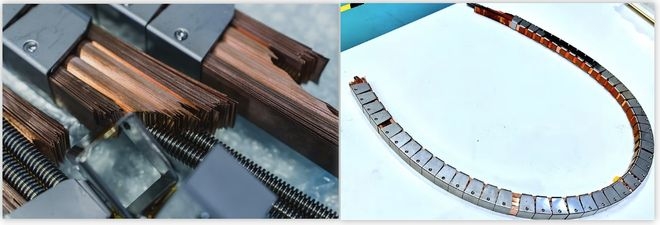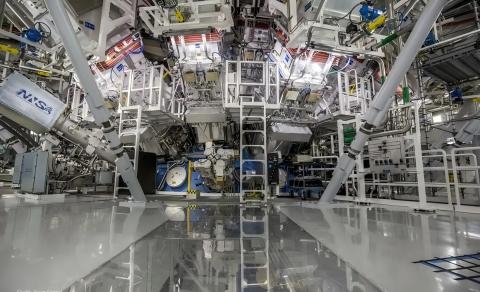冷核聚变 产业化还有多远?与“人造太阳”高温核聚变相比 哪一个率先产业化?
“冷核聚变”(Cold Fusion),也称为低能核反应(Low-Energy Nuclear Reaction, LENR),在主流科学界尚未被公认为一种可行的商业化能源技术。
https://www.bilibili.com/video/BV1vy6xYgEbf/?vd_source=4a62884e3db463b121a69b280870ae6f
“冷核聚变”(Cold Fusion),也称为低能核反应(Low-Energy Nuclear Reaction, LENR),在主流科学界尚未被公认为一种可行的商业化能源技术。
https://www.bilibili.com/video/BV1vy6xYgEbf/?vd_source=4a62884e3db463b121a69b280870ae6f
The whole world now only have 6 top LENR companies ,France -1(not open to the public) UK-1(ENG8) Japan-1(日本水野,网上无公开信息)USA -1 (Brilliant Light Power) Russia(网上无公开信息 )Canada-1(Star Fusion Technologies,LTd)
Star Fusion加拿大唯一一家冷核聚变公司 - 链接
对可控核聚变有兴趣或者需要看视频 请私信留言!mail@sci-c.org
“冷核聚变”(Cold Fusion),也称为低能核反应(Low-Energy Nuclear Reaction, LENR**),在主流科学界尚未被公认为一种可行的商业化能源技术。
这个领域的情况非常复杂,可以从以下几个方面来看:
1 主流科学界的态度:未被广泛认可
缺乏被接受的理论模型: 大多数科学家认为,在目前公认的物理学框架下,低温条件下发生可产生大量能量的核聚变是不可能的。
重复性问题: 1989年首次提出“冷聚变”的实验结果因缺乏可重复性而受到主流科学界的广泛质疑和批评。美国能源部(DOE)在当时也得出结论,没有确凿证据证明它是一个有用的能源来源。
名称争议: 许多研究者避免使用“冷聚变”这个带有争议的名称,而更倾向于使用LENR(低能核反应)。
2 少数团队的持续研究和突破
尽管主流科学界不认可,但全球仍有少数研究团队在继续探索LENR,并声称取得了一些进展:
台湾师范大学/江陵集团的突破: 有台湾的研究团队宣布在LENR技术上取得重大突破,利用水作为燃料,在低于 200 ∘C 的温度下激发出核反应(称为空化诱导聚变,CIF)。他们声称反应器的性能系数(COP,输出能量与输入能量之比)可达 1.2 至 4.3,并有潜力将发电厂效率提高 10 个百分点。
应用目标: 这些研究团队的目标通常是开发出可放大至发电厂规模的反应器,并希望最终能得到主流科学界的认可。
3 与“可控热核聚变”的区别
提到核聚变能源的商业化前景时,需要区分冷核聚变和可控热核聚变(通常简称“核聚变”或“热聚变”)。
可控热核聚变近年来获得了巨大的投资和技术突破(例如美国劳伦斯利弗莫尔国家实验室(LLNL)实现净能量增益)。许多私人公司和国家项目(如中国、美国、英国)都将目标设定在2030年至2035年左右建成首个商业化示范堆。
总结来说, 冷核聚变 (LENR) 的产业化,那它在主流认知中仍停留在基础研究和争议阶段,距离大规模产业化非常遥远,甚至可以说是“永恒的 20 年”。如果您指的是可控热核聚变的产业化,那么时间表已经大大加快,预计在 2030 年代有望实现首批商业示范。
By Steven B. Krivit Dec. 5, 2020 
A retired plasma physicist has given New Energy Times permission to republish critical letters he wrote about the ITER fusion reactor project many years ago. He has done this despite risks associated with publicly criticizing the international project.
Ernesto Mazzucato spent his entire career — from 1965 to 2014 — working at the Princeton Plasma Physics Laboratory, a U.S. Department of Energy national laboratory. Mazzucato continues to work on his own fusion concepts.
He told us about pressure from some of his peers from 1996 to 2006 when he openly criticized the ITER project, but he asked us to withhold those details for fear that it would interfere with his present access to resources and the ability to publish in peer-reviewed journals.
Mazzucato is the second retired fusion physicist from the Princeton laboratory with whom New Energy Times has spoken who is critical of ITER. The first was Mazzucato’s colleague, Daniel Jassby, who has been publishing critical articles about ITER on the Bulletin of Atomic Scientists Web site.
Jassby was the first scientist to provide New Energy Times with clear values for the ITER reactor power requirements, following our attempts to obtain this information directly from the ITER organization.
Mazzucato told New Energy Times that he “suffered dearly” shortly after Science magazine published his first critical comments in 1996.
“I knew that speaking out was risky, but I had to say what was on my mind,” Mazzucato said. “I thought that ITER would ruin fusion, and I had spent all my life working on fusion. ITER was the wrong track.”
Mazzucato told New Energy Times that, decades earlier, at the beginning of the discussions about the ITER concept, the conversation was purely about physics. The conversation soon shifted to the bait-and-switch scheme, as Nobel laureate Masatoshi Koshiba called it.
“The scientists were not talking about power production,” Mazzucato said, “but then slowly, the bureaucrats were put in charge of this project, and they started talking about a power gain, that ITER would produce 10 times more power than it would use.
“But none of the scientists said anything. We all knew that the power values only applied to the particles, not the overall reactor.”
These are the three letters Mazzucato provided.
In his first letter, Mazzucato responded to an article published in Science magazine by Andrew Lawler about the ITER project.
For the United States to concentrate its efforts on the construction of ITER, which by my estimates would require at least twice the $8 billion cited by Lawler, [Andrew Lawler, “U.S. Power Outage Won’t Dim ITER,” Science, Jan. 19, 1996, p. 282] would halt significant progress in domestic thermonuclear research.
It is tantamount to a suicidal plan that would discredit nuclear fusion as an economically viable form of energy production.
The current ITER design is based on the most optimistic extrapolation of experimental results for plasma confinement, plasma beta (the ratio of plasma to magnetic pressure), and plasma purity. To guarantee a minimum of performance, the design has been pushed to such a grandiose scale that its major and most sophisticated components would have to be manufactured in situ, as no road is large enough for their transportation. In spite of this, ITER would not ignite if any one of the aforementioned parameters falls below its assumed value by as little as 10 to 20%. Moreover, a single plasma disruption and consequent abrupt termination of tokamak discharge, a phenomenon that happens daily in tokamak reactors, could destroy the inner core of ITER. This raises the strong possibility that ITER may never achieve its goals.
The designing of ITER has served to indicate the major problems in physics and engineering that must be addressed before the construction of a tokamak fusion reactor is attempted: The former include an improved plasma confinement at large values of beta, which would lead to a more compact and cheaper reactor, as well as an improved plasma stability, which could lessen the danger of plasma disruptions; the latter include the development of low activation materials, and a better divertor design. These problems are being tackled in experiments and are the focus of proposed near-term facilities.
The construction of ITER, by absorbing all the available funds, would inevitably prevent development in these critical areas. From Lawler’s article, it appears that ITER finds its strongest support in a “wealthy and influential association of major corporations…..” This sounds like an ominous repetition of history, as our problems today with nuclear fission power plants originated when the nuclear industry decided to bring to prominence the first fission reactor concept that appeared to work. Similarly, the adoption of this probably faulty device would have catastrophic consequences for the development of nuclear fusion energy.
In his second letter, Mazzucato responded to an article published in The Economist by Andrew Lawler. It was titled “Bouillabaisse Sushi,” a clever reference to the two factions, one that wanted to build the reactor in France, the other that wanted to build it in Japan. His published letter was significantly edited so we are providing his original letter for the record.
Being The Economist is a business oriented publication, it is not surprising that the major concern in your article on ITER (“Bouillabaisse Sushi,” February 7, 2004, is the large price tag, which in your opinion is sufficient to disqualify nuclear fusion as an economical way of generating electricity. This is based on your assumption that ITER is an apparatus for the production of energy. Indeed, this is not true. ITER was conceived as an experimental device for studying the physics of thermonuclear plasmas, and therefore its construction and operating costs are not necessarily those of the fusion reactor that it is supposed to investigate. Besides, ITER is not the only scheme of fusion reactor.
The real problem with ITER is more serious. It stems from our present knowledge of plasma physics which does not guarantee that it will be capable of reaching the required plasma conditions. ITER is based on a very optimistic extrapolation of existing data, where a small deterioration in plasma confinement would be sufficient to degrade substantially the achieved plasma conditions. This, together with our incomplete knowledge of what to expect in the thermonuclear regime, makes ITER a risky project, whose failure could cause irreparable harm to the credibility of nuclear fusion.
As Masatoshi Koshiba, who shared the 2002 Nobel prize in physics, recently said “…this project is not in the hands of scientists any more, but in the hands of politicians and businessmen…” (www.eubusiness.com/afp/040130132633.8evw80e7). Of course, the high cost of ITER, which in my opinion is larger than the $10 billion you quote in your article, is exactly what has attracted the political and business interest. Still, I find it amazing and very depressing that a small but vocal minority of the fusion research community, to which I belong, was able to convince the governments of many nations to support – to use your technical term – a boondoggle.
Mazzucato didn’t remember where he originally published his third letter, but by its formatting, he had written it in response to an article in The Economist titled “A White-Hot Elephant.”
The Problem of Nuclear Fusion Energy
ITER is a large international project aimed at demonstrating the feasibility of fusion energy. Partners in this effort are the European Union, Japan, China, India, South Korea, Russia and the U.S. A recent article in The Economist (“A White-Hot Elephant,” Nov 23, 2006), makes a startling connection between the war in Iraq and ITER. Referring to the process of selecting a site for the fusion project, it states that “the subsequent wrangling looked like a proxy for rows over the war in Iraq.” Indeed, the similarity between the two projects runs much deeper, since, like the war in Iraq, the political support of ITER stems from misleading propaganda. By now the case of the war in Iraq is of public domain, that of ITER is not.
ITER is an acronym for International Thermonuclear Experimental Reactor. To boost its importance, we are reminded (www.iter.org) that ITER means the way in Latin. It sounds as if the Intelligent Designer, after telling Adam and Eve to be fruitful and multiply, added: “do it as much as you like, all problems will be taken care of by ITER.” Well, we did it recklessly and now we are in serious trouble, but is ITER really the way to the solution of our problems? Here are some facts to consider.
First – The official construction cost of ITER is $6 billion. The EU will contribute 45%, while the other six partners will equally share the remaining 55% ($3.3 billion). The U.S. Department of Energy (DOE) estimates that this will cost $1.122 billion to taxpayers instead of $550 million (one sixth of $3.3 billion). Since DOE is not a philanthropic institution, we must assume that a similar discrepancy is in the budgets of the other six partners as well. Presently, seven more countries are considering joining ITER: Brazil, Mexico, Canada, Bulgaria, Lithuania, Slovakia and Kazakhstan (no word from Borat, yet). All will have to pay an entrance ticket, adding new cash to the coffer.
Conclusion: either the real construction cost of ITER is much larger than the official figure or somebody is getting rich on fusion.
Second – ITER will produce 500 megawatts (MW) of fusion power, equivalent – we are told – to a tenfold gain (defined as the ratio between the total fusion power and the external power needed for heating the fuel). Unfortunately, 20% of these 500 MW (it used to be 410 before miraculously growing to 500) will be trapped in the reactor chamber. ITER doesn’t plan to transform the remaining 400 MW into usable energy, i.e., electricity. However, even if it did, it could generate – to be generous – no more than 160 MW, less than the electric power needed for its operation.
Conclusion: the real gain of ITER, i.e., the ratio between output and input electric powers, is smaller than one.
Third – ITER will be able to operate at full power only for a maximum of 400 seconds. After that, it will need to be shut down, to restart later for another pulse. The supporters of ITER are quick to stress that their main objective is to test the physics and engineering of fusion reactors, not to generate continuous power. However, they do not mention that all physics objectives of ITER could be achieved with smaller and much less expensive devices, and that most engineering problems of fusion reactors will not be solved by ITER, including how to make their operation steady state.
Fourth – From all of the above, we must conclude that the cost of electricity from an ITER-like reactor will be enormous. Again, we are told that this is not a problem since it can be fixed by increasing the reactor’s size. Indeed, assuming that the latter will operate at the same fuel temperature of ITER, our present understanding indicates that the total fusion power will increase only linearly with the reactor’s linear dimension, while costs will rise at least squarely.
Conclusion: The economy of scale does not work in this case – a bigger reactor will be even less economical than ITER.
Quoting The Economist, it is clear that “Like the International Space Station, ITER had its roots in superpower politics. As with the Space Station, the scientific benefits may not justify the price.” The result is that, rather than [advancing] the commercialization of fusion, ITER will risk destroying its credibility. It took three years to understand the fallacy of the war in Iraq and to get rid of some of its sponsors. Unfortunately, we will not be so lucky with ITER. The recent signing of the International Fusion Energy Agreement by the seven partners in Paris (Nov. 21, 2006) will secure thirty years of life to ITER. At the end, none of its present sponsors will be fired – they will all be retired or dead.
Mazzucato is the first fusion scientist I know who a) noticed the discrepancy between ITER’s planned power values and the publicized power values and b) openly objected to the false claims its promoters were making about the promised power gain of the reactor. Nobel Prize winner Masatoshi Koshiba had also sounded the alarm sometime between 2001 and 2004, calling the ITER project a _bait-and-switch trick_.
Mazzucato told me that all of his colleagues knew that the bureaucrats in charge of the project were tricking the public. Assuming he’s right, then there are thousands of fusion experts who saw what was going on and did and said nothing about it. It’s not the first time in history that something terrible was happening in a community and was known as an open secret within that community. But it is the first time in modern history that something like this, on this scale, has happened in science.
By 2003, the deception was _firmly established_, as evident by Robert Stern’s statement in the New York Times on Jan. 31, 2003: “ITER would provide a record 500 megawatts of fusion power for at least 500 seconds, a little more than eight minutes, during each experiment. That would meet the power needs of about 140,000 homes.”
In reality, a fusion reactor designed with the parameters of ITER, if configured to convert its thermal output to electricity, wouldn’t be able to power a single light bulb.
Public statements like Stern’s, published without the authors’ knowledge that they were false, were the norm for more than two decades. Either no fusion scientists except Mazzucato and Koshiba read news accounts about ITER and realized what was happening, or the majority of fusion scientists saw that the “mistakes” significantly favored their field, and they turned — and continue to turn — a blind eye to what has now developed into the largest science fraud in modern history
中国有“人造太阳”之称的全超导托卡马克核聚变实验装置(EAST)在安徽合肥创造新世界纪录,首次完成1亿摄氏度1000秒“高质量燃烧”,标志我国聚变能源研究实现从基础科学向工程实践的重大跨越,对人类加快实现聚变发电具有重要意义。
EAST形如“巨罐”,汇聚“超高温”“超低温”“超高真空”“超强磁场”“超大电流”等尖端技术于一体,近百万个零部件协同工作,拥有专利近2000项。十余年来,EAST历经15万多次实验,最终实现“亿度千秒”的长脉冲高约束模等离子体运行,攀上新的科学高峰。
财联社10月27日讯(编辑 史正丞)近期备受关注的核聚变发电领域,又有挑战者报告实现里程碑突破。
东京初创公司Helical Fusion周一举行新闻发布会,宣布在开发对聚变反应堆至关重要的高温超导(HTS)磁体方面取得进展,这标志着该公司朝着实现“商业聚变能源”的目标迈进重要一步。
作为背景,核聚变工程常被称为“人造太阳”——模仿太阳运行的原理产生能源。人类正通过将氢的同位素(通常为氘和氚)加热到远高于太阳核心的温度,形成名为等离子体的超高温气体。在这种状态下,原子核发生聚变,释放出巨量能量。
由于等离子体的温度太高,任何材料都无法承受与其接触,所以需要高温超导磁体产生磁场将其约束在反应堆中。与全球主流的托卡马克(俄语“磁线圈环形真空室”)设计不同,日本聚变产业一直钻研其特有的“螺旋式磁约束技术”。

(Helical Fusion首台核聚变反应堆Helix KANATA的示意图)
Helical Fusion周一宣布,公司开发的高温超导磁体在模拟真实聚变反应堆的条件下成功完成了预定测试。组装成线圈的这些磁体为全尺寸,旨在用于实际反应堆。
与此同时,为了满足“三维螺旋结构”的设计,Helical Fusion采用了多条高温超导带束合的解决方法,使其高温超导导体样本兼顾性能和“可弯曲性”。
对于近期完成的这项验证,Helical Fusion声称这是“任何欧洲和美国公司都未曾达到的首创之举”。
Helical Fusion成立于2021年,其研发集成了日本国立核融合科学研究所的成果,目标是在2030年代将其KANATA示范反应堆打造成全球首个具有商业可行性的聚变电站。据悉,核聚变电站的商业可行性具有3个标准:1)具备全年不间断运行的稳定性;2)输出能量超过消耗;3)能够对部件进行定期维护。
对于这个前沿领域而言,身处日本的Helical Fusion也面临欠缺“钞能力”的不足。公司在今年7月表示,完成了23亿日元(约合人民币1.07亿元)的A轮融资,使得包括补助和贷款在内的总资本达到52亿日元。
Helical Fusion首席执行官Takaya Taguchi也在周一表示:“中国、美国等国家过去五年里在聚变领域投入超过1万亿日元。与此同时,日本在同一时期仅投入了1000万日元。”
不过随着俄乌冲突、全球变暖和人工智能数据中心的大规模建设,聚变能源的前景正在愈发受到各国政府和投资者的关注。以日本为例,新任首相高市早苗在上周五的首次施政演讲中提及日本政府将以“早日实现…在社会中应用聚变能源为目标”。据悉,在美国总统特朗普本周访日期间,两国也将签署一项包含聚变能源在内的尖端技术合作协议。
在美国,由麻省理工学院衍生Commonwealth Fusion Systems正计划在弗吉尼亚州建设首座“电网级聚变电厂”,目标是在2030年代初实现发电。
据中国外交部发言人毛宁上周末介绍,中国核聚变装置BEST预计将于2027年竣工,有望成为人类历史上首个实现聚变发电的装置。
从上世纪苏联率先建立发电站以来,核能利用已经过了半个多世纪了,可是如今对核能的利用依旧是非常的片面。
2025年4月7日,美国劳伦斯·利弗莫尔国家实验室(LLNL)的国家点火装置(NIF)创造了核聚变新纪录——在其第八次点火实验中产生了高达8.6兆焦耳的能量输出,Q值(能量增益系数)达到了前所未有的4.13!这意味着人类首次在实验室中实现了能量放大超过4倍的可控核聚变反应,向"人造太阳"发电梦想迈出了重要一步。
什么是核聚变?为什么被称为"人造太阳"?
核聚变是氢等轻原子核在高温高压下结合成更重元素并释放巨大能量的过程,正是这种反应为太阳提供能量。我们试图在地球上复制这一过程,所以被称为"人造太阳"。
NIF是什么?它如何实现核聚变?
NIF是世界上最大的激光装置,拥有192束超高能激光。它将这些激光束聚焦到一个装有氢同位素的豌豆大小的靶上,产生极端温压条件,迫使氢原子核融合
什么是Q值?为什么它如此重要?
Q值是输出能量与输入能量的比值。Q值大于1意味着核聚变产生的能量超过了用于启动反应的能量,相当于"能量盈亏平衡点"。Q值达到4.13意味着每输入1单位能量,就能产出4.13单位能量!
8.6兆焦耳是什么概念?
8.6兆焦耳相当于约2.4千瓦时电能,能让一台普通电热水壶工作约1小时。虽然看起来不多,但这能量是在极短时间内(纳秒级)从微小燃料颗粒中释放出来的,能量密度极高!
NIF的突破与2022年的历史性点火有何不同?
2022年12月,NIF首次实现点火,Q值为1.5。现在Q值已达4.13,能量输出从3.15兆焦耳提升至8.6兆焦耳,进步显著。这证明核聚变不仅可行,还能持续提高效率。
这次实验具体用了多少能量输入?
激光输入能量为2.08兆焦耳,峰值功率高达456太瓦(全球用电峰值的约23倍)!但只有2.08兆焦耳真正到达靶,产生了8.6兆焦耳的输出。
为什么说我们离商业核聚变发电还有距离?
虽然Q值达到4.13很惊人,但NIF的整个系统需消耗约300兆焦耳电能才能产生这些激光。从整体角度看,能量投入产出比仍远未达到商业可行性。
与磁约束核聚变(如ITER托卡马克)相比,NIF有何异同?
NIF采用惯性约束方式,用激光将燃料压缩到极限;ITER用强磁场约束高温等离子体。两种方式各有优势:NIF已实现科学意义上的点火,ITER目标是更接近商业应用的长时间稳定运行。
这一突破对我们普通人有什么意义?
核聚变是人类未来能源的希望之星,它燃料丰富(海水中的氘)、安全(不可能发生核爆炸)、清洁(几乎无放射性废料)、高效(克级燃料可产生吨级煤炭能量)。这一突破证明我们正逐步掌握这一技术。
核聚变发电有希望在我们有生之年实现吗?
很可能!科学突破正在加速。从2022年首次点火到现在Q值翻倍多只用了两年多。虽然商业化还需解决重复率、经济性等难题,但多国正大力投资,预计2040-2050年间可能见到首批商业核聚变电站。
NIF的这一里程碑式突破告诉我们,人类正在逐步解开核聚变这把"能源金钥匙"。虽然商业化道路仍充满挑战,但科学进步速度正在加快。我们也许能亲眼见证,甚至参与到人类能源革命的伟大进程中。让我们共同期待那一天的到来!
参考文献
Lawrence Livermore National Laboratory. (2025). Achieving Fusion Ignition. National Ignition Facility & Photon Science.
TechSpot. (2025). Fusion breakthrough: NIF achieves 8.6 megajoules, shattering previous record.
NotebookCheck. (2025). Laser-powered fusion: NIF hits record 8.6 MJ output.
Wikipedia. (2025). Fusion energy gain factor.
发表于: 2025-05-22
原文链接:https://page.om.qq.com/page/O3kNWQuUSfnHLc_vFtePQ3wA0
中国“人造太阳”核心材料不再受制于人,金属所打造吨级高纯净C276合金,助力2030聚变能发电
“人造太阳”关键核心材料实现了国产化制备,而且这种材料强大到可以在指甲盖大小的面积上承受 19 吨的重量。这一材料便是由中国科学院金属研究所(下称“金属所”)研究员戎利建和团队制备的高纯净吨级 C276 合金。

图 | 光洁如镜的高纯净吨级 C276 合金(来源:资料图)
金属所方面公开表示:“这标志着我国在高温超导带材关键材料国产化制备上实现了重要突破,将为第二代高温超导材料的全国产业化生产和应用提供重要保障。”
据了解,戎利建自上世纪末便开始在金属所工作,自那时起一直研究各种合金。在此次高纯净吨级 C276 合金的制备中,他和团队突破了合金的锻造、轧制、热处理、相析出调控、光亮表面质量控制等关键技术,攻克了长期以来制约国产化基带应用的技术难题,实现了长度达到 2000m、厚度在 0.046mm(约为头发丝直径一半)、宽度达到 12mm 的第二代高温超导带材(REBCO,Rare-Earth Barium Copper Oxide)的 C276 合金基带的批量化制备,基带表面的粗糙度小于 20nm,在液氮温度下抗拉强度大于 1900MPa,在 900℃下加热 5 分钟后室温抗拉强度大于 1200MPa,展现出优异的热稳定性和力学性能。
与此同时,C276 合金中的杂质元素含量能够满足较高应用要求,在纯净度上的各项指标均已达到进口材料水平,个别指标优于进口材料。这种高纯净的材料,能够确保合金拥有优异的冷热加工性能和基带的表面质量,故能用于被誉为“人造太阳”的可控核聚变装置,让这一成果突破了可控核聚变的第二代高温超导带材技术瓶颈,为制备第二代高温超导带材提供了关键基础材料的自主保障。